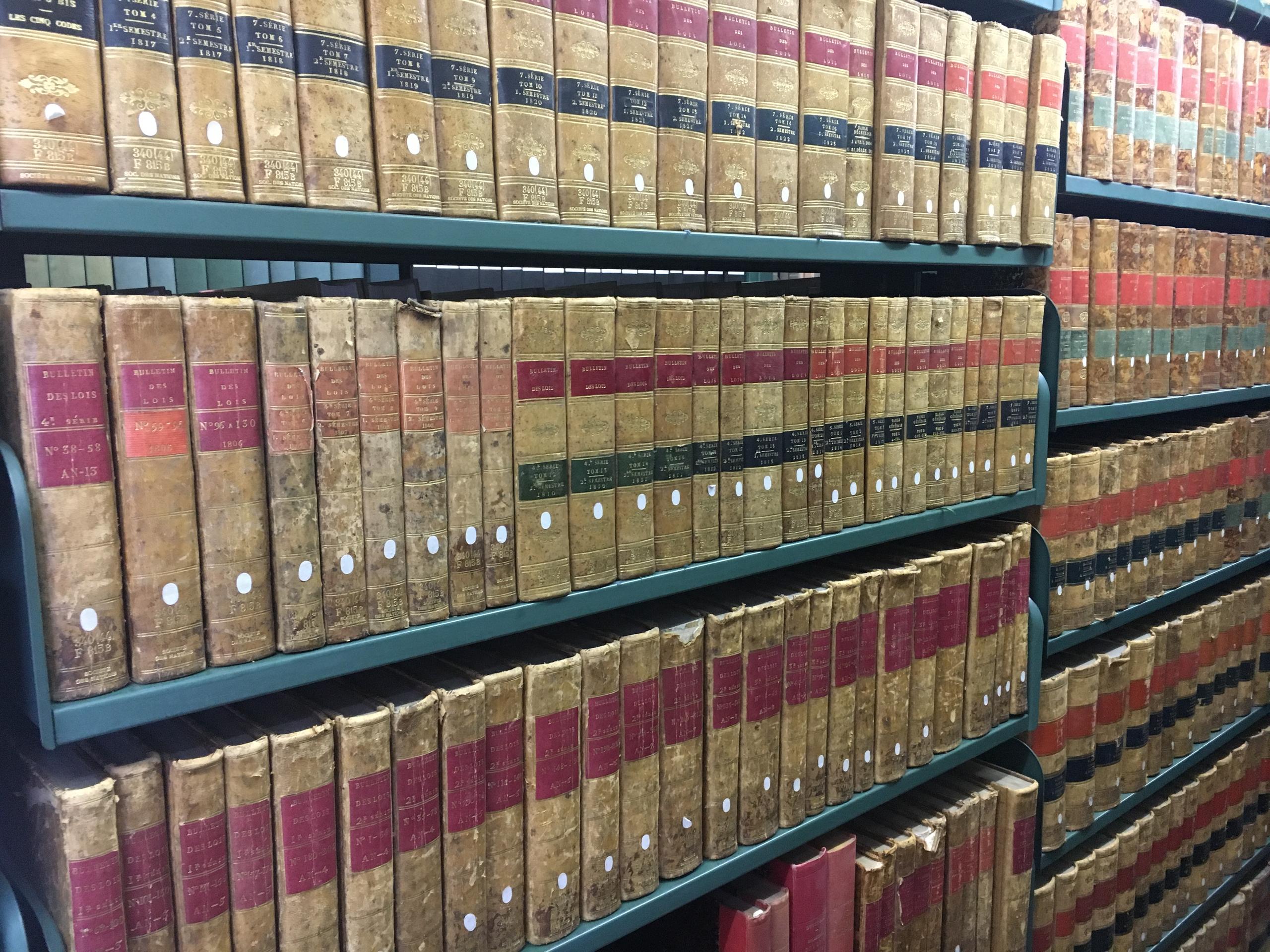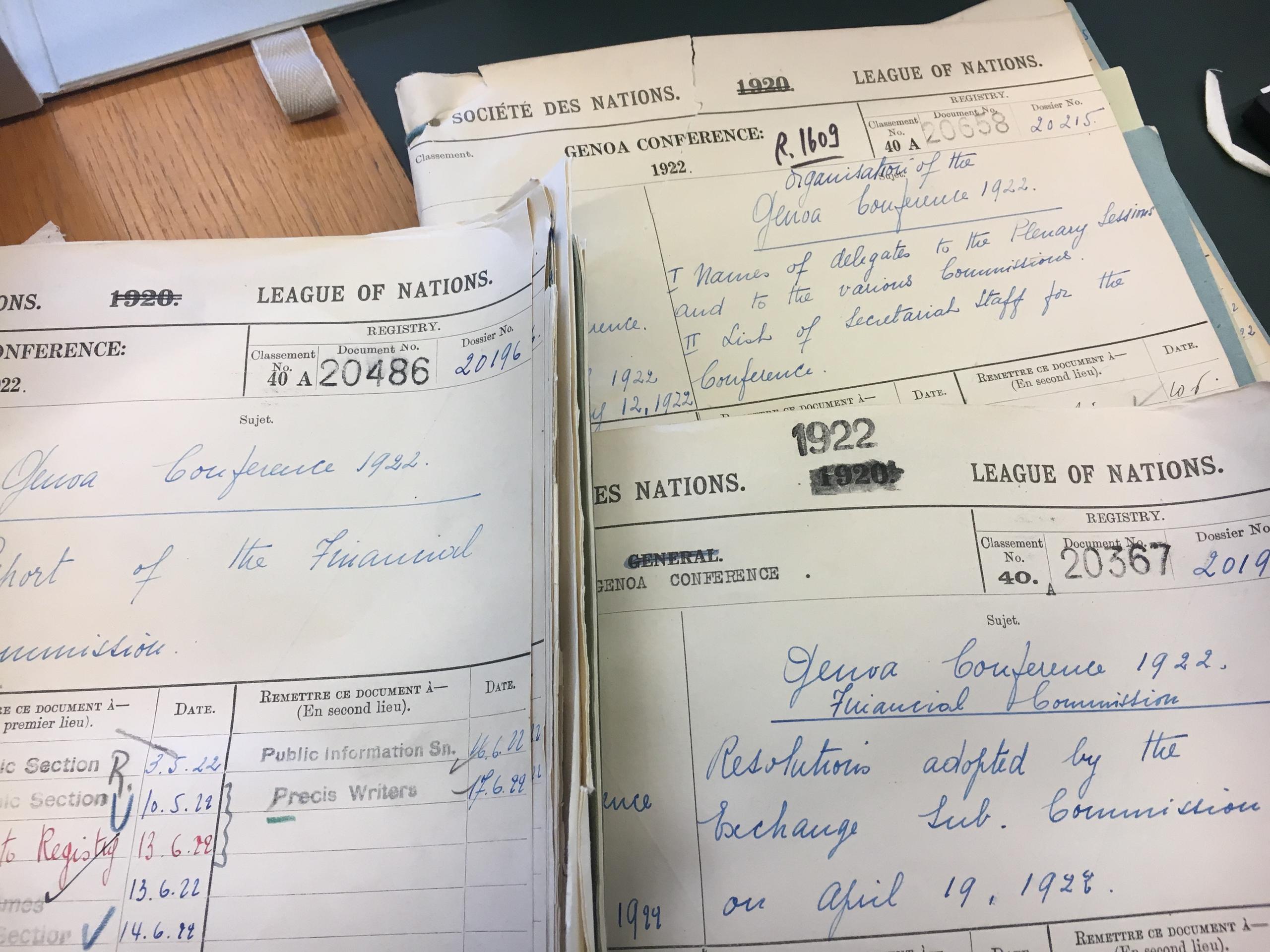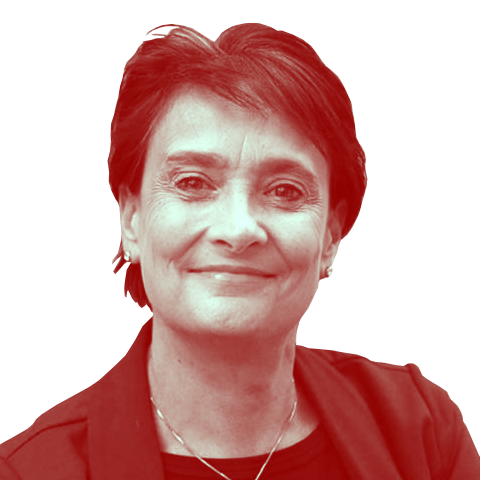
A rewarding visit to a quiet corner of the UN

Today I’m on my way to a quiet corner of the United Nations Palais des Nations building in Geneva, which, to my shame, I have never actually visited before.
The UN LibraryExternal link Geneva is in Block B of the Palais, part of the original magnificent League of Nations building. I have worked here for more than ten years, but every day I am reminded that the ambitions which led to the creation of the League are reflected in its size: the Palais is huge, bigger than Versailles, with miles of corridors, thousands of offices, and twists and turns that can be quite mystifying. Don’t enter, a colleague once joked, without a compass, a sleeping bag, and plentiful supplies of food.
I think of that as I head for the library…well, head implies a certain purposeful direction, which is lacking in me today. Wishing I had left a useful trail of breadcrumbs behind me, I realize I know neither where I am, nor how to get back to where I started.
Luckily rescue is at hand, when a helpful gentleman asks if I am ‘going to see Amanda?’ ‘Yes’, I gratefully nod, and several magnificent art deco doors and a couple of corridors later I am there, where librarian Amanda Howland and Colin Wells, manager of the archives, are waiting for me.
Oasis of tranquillity
I find myself in a grand oasis of elegant tranquillity. If you want to see the vision of the League of Nations made solid in all its 1930’s style, this is the place to be. Just the entrance is breathtaking, the doors sweep upwards, two full stories in height, the floors are polished marble: ivory, and green. And where other parts of the original League building show their wear and tear these days, everything in the library gleams with love.
The first thing Amanda and Colin show me is some history of the building itself. Inside the UN Library is a small museum, and here you can see the paper dreams which eventually became solid marble: the best architects of the early 20th century vied with one another to design the home of the brave new institution which was supposed to consign war to history.
So good were the designs that five architects were chosen to work on the project together: Julien Flegenheimer of SwitzerlandExternal link, Camille LefèvreExternal link and Henri-Paul NénotExternal link of FranceExternal link, Italian architect Carlo Broggi and József Vágó of HungaryExternal link.
But pity poor Le Corbusier, who was apparently the favourite to win the tender, but whose ambitious plans were disallowed because he submitted a print copy of them, rather than the original drawings. He might take comfort from the fact that his ideas are at least on display inside the building he had hoped to design.

But a library, of course, is all about books and records, and there is no shortage of them here: ten floors of them, from France’s entire legal code dating back to the French revolution, to thousands of documents relating to the work of the League of Nations. Placed end to end, the League documents alone would stretch three kilometres.
And while we all know that the UN generates an awful lot of paper, there are some true gems here: The Treaty of Locarno, with its original signatures, or Haile Selassie’s impassioned speech to the League following Italy’s invasion of Ethiopia in 1936.
Outlining Italy’s actions in his country, Haile Selassie warned the assembled nations what was at stake: “It is collective security: it is the very existence of the League of Nations. It is the confidence that each State is to place in international treaties. It is the value of promises made to small States that their integrity and their independence shall be respected and ensured. It is the principle of the equality of States on the one hand, or otherwise the obligation laid upon small Powers to accept the bonds of vassalship. In a word, it is international morality that is at stake. “
Three years later, the second world war began, and the existence of the League of Nations became at best irrelevant, it was replaced by the United Nations in 1946.

Public access
One of the best things about the library, but not perhaps as well known as it should be, is that it is open to the public upon request. The books and documents stored here are accessible to everyone.
What’s more, there are a wealth of reading rooms in which to peruse, each more elegant than the last. There is the legal reading room, the economic and social reading room, the archives reading room, and even the periodical reading room, complete with two stunning 1950’s chandeliers, donated by the government of then Czechoslovakia.
Do not imagine, however, that the UN Library is simply resting on its one and a half million volumes, not a bit of it.
Transparency and diversity
As well as an ambitious plan to digitise the entirety of the League of Nations archives, the library organises dozens of talks and cultural events each year.
“Libraries are cultural centres,” points out cultural events manager Sigrun Habermann. Ms Habermann takes the UN General Assembly resolution on dialogue among civilisations as her guide, and says ‘diversity and transparency’ are her watch words.
In November alone, UN staff and visitors could enjoy ‘I Dance’, a performance designed to promote the rights of those with disabilities, danced by people with disabilities. Or go to the ‘Colours of Diversity’ exhibition of paintings and sculptures by artists from Romania’s ethnic minorities.
Or there is an ongoing photographic exhibition ‘Breathtaking Russia’. Forget the tired images of grey Soviet era housing estates, or the onion domes of the Kremlin, here you can see some of the natural wonders of the world’s largest country.
Much more is planned for 2018, so, thank you to all at the UN Library. I don’t know why I didn’t go before, but I know I’m going back.
You can follow Imogen Foulkes on twitter at @imogenfoulkes, and send her questions and suggestions for UN topics.

In compliance with the JTI standards
More: SWI swissinfo.ch certified by the Journalism Trust Initiative






























You can find an overview of ongoing debates with our journalists here . Please join us!
If you want to start a conversation about a topic raised in this article or want to report factual errors, email us at english@swissinfo.ch.